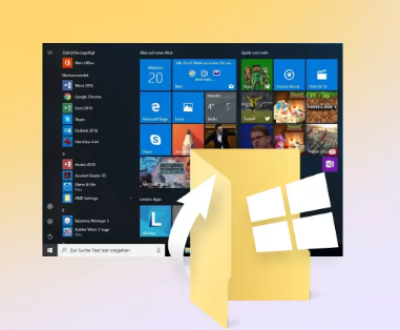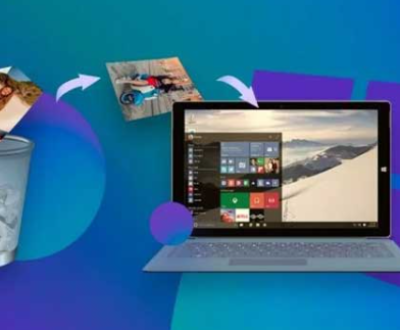When your computer encounters disk errors, it can be incredibly frustrating. A “Repairing disk errors, this might take an hour” message might appear during boot-up or when attempting to access a specific drive. These errors typically point to issues with the file system or bad sectors on your hard drive or solid-state drive (SSD). While it can seem like a complex issue, there are several methods and tools available to help resolve disk errors and recover lost data.
File System Errors: These errors occur when the file system becomes corrupted, typically due to improper shutdowns, software crashes, or hardware failures. When the file system is damaged, the operating system may have difficulty locating files, resulting in the “Repairing disk errors” message.
Physical Disk Errors: Physical disk errors occur when there is damage to the hard drive’s hardware, such as bad sectors or mechanical failure. These errors are more severe and may require specialized tools or professional data recovery services.

The “Repairing disk errors” message is often displayed by the operating system (such as Windows) while attempting to fix file system errors. However, the process may also indicate physical issues with the disk.
Why Do Disk Errors Happen?
Disk errors can happen for various reasons. Some of the most common causes include:
Improper Shutdowns: Turning off the computer while files are being written to the disk can cause file system corruption. Power outages, system crashes, or forced shutdowns can also lead to disk errors.
Bad Sectors: Hard drives and SSDs contain small sections called sectors. A bad sector occurs when part of the disk becomes physically damaged, making it unreadable or inaccessible. Over time, more sectors may become damaged, leading to errors.
Disk Fragmentation: Fragmentation occurs when files are stored in non-contiguous blocks on the disk. While fragmentation is more of an issue on traditional hard drives, it can still contribute to errors and slow performance.
Malware or Software Issues: Malware infections or faulty software can damage files or system processes, causing disk errors. Software bugs or corrupted system files can also lead to issues with the disk.
Overheating: Overheating can damage the internal components of the disk, especially in hard drives with moving parts. Excessive heat can lead to physical damage and result in disk errors.
Aging Hardware: Over time, storage devices degrade naturally. Hard drives, in particular, have a limited lifespan due to the mechanical components involved. SSDs, while more durable, can also experience wear and tear after extensive use.
Methods for Repairing Disk Errors
There are several methods available for repairing disk errors. The right approach depends on the severity of the issue and the type of disk error. Below, we’ll explore various methods, starting with the most straightforward and moving to more advanced techniques.
Method 1: Use the Built-In Disk Check Tool (Windows)
For minor file system errors, Windows has a built-in tool that can scan and repair disk issues. The tool checks the integrity of the file system and attempts to fix any errors it finds. Here’s how to use it:
Open File Explorer: Press Windows + E to open File Explorer.
Locate the Drive: In the left sidebar, find the drive that is displaying the “Repairing disk errors” message. Right-click on the drive and select Properties.
Open Tools Tab: In the Properties window, navigate to the Tools tab.
Check for Errors: Under the “Error checking” section, click on Check.
Scan and Repair: Windows will scan the drive for errors. If it finds any, it will prompt you to repair the drive. Follow the on-screen instructions to proceed.
Restart Your Computer: After the scan is complete, restart your computer. The disk errors should be repaired if the issue was related to the file system.
Method 2: Use the CHKDSK Command (Windows)
If the built-in disk check tool doesn’t resolve the problem, you can use the CHKDSK command to perform a more thorough scan and repair. CHKDSK (Check Disk) is a powerful utility built into Windows that can detect and fix disk errors, including bad sectors. Here’s how to use it:
Open Command Prompt: Press Windows + X and select Command Prompt (Admin) from the menu. Alternatively, you can search for “cmd” in the Start menu, right-click on Command Prompt, and select Run as Administrator.
Enter the CHKDSK Command: In the Command Prompt window, type the following command, replacing C: with the letter of the drive you want to repair:
bash
chkdsk C: /f /r
/f tells CHKDSK to fix any errors it finds.
/r tells CHKDSK to locate bad sectors and recover readable information.
Press Enter: Press Enter to run the command. If you’re attempting to repair the system drive (typically C:), CHKDSK may ask if you want to schedule the scan for the next restart. Type Y and press Enter.
Restart Your Computer: If the scan is scheduled for the next restart, restart your computer. CHKDSK will scan the drive and attempt to fix any errors it finds. This process can take a while, especially on large drives.
Wait for the Scan to Complete: Once the scan is complete, CHKDSK will display a report of the errors it fixed. If the errors were successfully repaired, the message “Repairing disk errors” should no longer appear.
Method 3: Use Third-Party Disk Repair Software
If the built-in tools don’t resolve the issue, third-party disk repair software can offer more advanced features. Some of the best tools for repairing disk errors include:
EaseUS Partition Master: This tool allows you to check the health of your hard drive, fix errors, and recover lost partitions. It’s user-friendly and offers a free version with limited functionality.
MiniTool Partition Wizard: Another powerful tool for managing disk partitions, fixing errors, and recovering data. It includes a surface test feature that can identify bad sectors on the drive.
AOMEI Partition Assistant: This tool provides a suite of disk management options, including error checking and repair. It’s particularly useful for diagnosing and fixing file system issues.
HD Tune: HD Tune is a free disk utility that provides detailed information about the health of your hard drive. It can check for bad sectors and monitor disk performance.
These tools are often more effective at fixing complex issues that built-in utilities cannot resolve. Simply download and install the software, and follow the on-screen instructions to scan and repair your disk.
Method 4: Check for Bad Sectors Using Specialized Tools
Bad sectors are one of the most common causes of disk errors. If your drive has bad sectors, it can lead to data loss and prevent you from accessing files. To check for bad sectors, you can use specialized tools like:
Victoria for Hard Disk: A powerful tool for scanning and repairing bad sectors. It offers advanced features for low-level disk management.
HDDScan: This tool performs detailed scans of hard drives and can detect bad sectors. It’s particularly useful for monitoring drive health and preventing data loss.
If the tool detects bad sectors, it will attempt to recover readable data from them. If the damage is severe, you may need to replace the drive to avoid further issues.
Method 5: Reformat the Disk
If the above methods fail to repair the disk errors, reformatting the drive may be the best solution. Reformatting erases all data on the drive, so it’s essential to back up any important files before proceeding. Here’s how to reformat the disk:
Backup Your Data: Use external storage or cloud services to back up your important files.
Open Disk Management: Press Windows + X and select Disk Management.
Select the Drive: Right-click on the drive displaying the error and choose Format.
Choose the File System: Select the desired file system (typically NTFS for Windows) and assign a volume label.
Start Formatting: Click OK to start the formatting process. Once the drive is formatted, it will be free of errors.
Method 6: Replace the Drive (When Necessary)
If the disk errors persist after attempting all the repair methods, it may be a sign that the drive is physically damaged. In this case, replacing the drive is the only viable option. Before doing so, make sure to back up any critical data, either by using data recovery software or taking the drive to a professional recovery service.
Preventing Future Disk Errors
Once you’ve successfully repaired the disk errors, it’s essential to take steps to prevent them from happening again. Some preventive measures include:
Perform Regular Backups: Regularly back up your important files to an external hard drive, cloud storage, or both. This ensures you won’t lose data in the event of future disk errors.
Use Disk Monitoring Tools: Tools like CrystalDiskInfo can help you monitor the health of your drive and catch issues early before they become serious.
Keep Your System Updated: Ensure that your operating system and software are up to date. Regular updates can patch security vulnerabilities and reduce the risk of disk errors caused by bugs.
Defragment Your Hard Drive: If you’re using a traditional hard drive (HDD), defragmenting it regularly can help improve performance and reduce the likelihood of fragmentation errors.
Avoid Overheating: Keep your computer and hard drive cool by ensuring proper ventilation. Overheating can damage the hardware and lead to disk errors.
Handle the Drive Carefully: For physical drives, avoid dropping or jarring them. Handle them gently to prevent physical damage that can lead to errors.
About us and this blog
Panda Assistant is built on the latest data recovery algorithms, ensuring that no file is too damaged, too lost, or too corrupted to be recovered.
Request a free quote
We believe that data recovery shouldn’t be a daunting task. That’s why we’ve designed Panda Assistant to be as easy to use as it is powerful. With a few clicks, you can initiate a scan, preview recoverable files, and restore your data all within a matter of minutes.
Subscribe to our newsletter!
More from our blog
See all postsRecent Posts
- How to restore deleted images 2025-06-30
- How to restore a deleted file on windows 2025-06-30
- is there any way to restore deleted photos 2025-06-30

 Try lt Free
Try lt Free Recovery success rate of up to
Recovery success rate of up to









